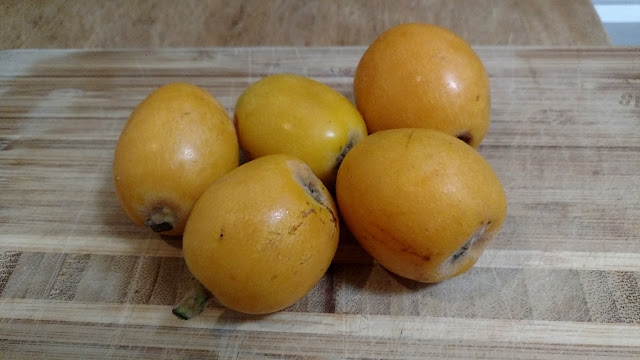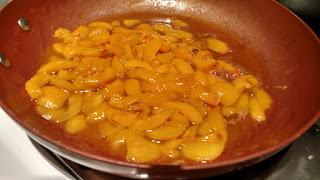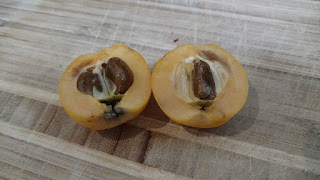
Recipe: Loquat sauce a versatile topping
 |
| Among the first stone fruit of summer, loquats can be used like peaches. (Photos: Debbie Arrington |
The first loquats I ever ate grew on a mystery tree that sprouted in the back of our Long Beach yard. (I assumed it was planted by birds.)
The fast-growing tree had interesting, textured foliage, making it a handsome volunteer. The roundish yellow fruit were a bonus.
But what to do with them? First, remember loquats have nothing to do with kumquats. Think peach, not citrus.
Loquats seem to be all big brown seeds, wrapped in juicy fruit. The flesh is tangy, almost tart, until fully ripe when loquats become honey sweet.
Nicknamed Japanese plum, the loquat has been cultivated in Japan for more than a thousand years. Native to China, it’s also very popular in Korea, India and Pakistan. Loquat comes in several varieties, most 1 to 2 inches long and born in clusters. The skin may be smooth or downy, yellow or orange or blushed with red. The flesh ranges from creamy white to apricot orange.
Loquats are among the first stone fruit of spring, but they have a big head start. With fragrant white flowers, the trees bloom in October or November. If the winter is mild, the loquats ripen in April and May.
Loquats have a tropical taste; part peach, citrus and mango. Such a combination is worth the effort it takes to peel and seed these small fruit.
 |
| Loquat sauce goes equally well in sweet or savory dishes. |
As for what to do with them, loquats can substitute for peaches in a wide range of recipes. But I think they’re best when their individuality is allowed to stand out, complementing that sweet-tart tropical taste.
This sauce is equally at home on top of pork tenderloin or vanilla ice cream. It also works well with grilled chicken, roast duck or flan.
Experiment with spices. For savory dishes, add ¼ teaspoon of red chili flakes or ground ginger along with the jelly.
Also, try substituting ½ cup fresh strawberries for half the sliced loquats, then use strawberry jam as the sweetener; a very good combination with grilled pork or pound cake.
 |
| The big seeds are a distinguishing feature of loquats. |
Quick loquat sauce
Makes about 1 cup
Ingredients:
1 cup loquats, peeled, seeded and sliced
Juice of ½ orange (about ¼ cup)
2 tablespoons butter
2 tablespoons pear jelly, strawberry jam or orange marmalade
Instructions :
 |
| Once the ingredients are in the pan, the sauce goes quickly. |
Comments
0 comments have been posted.Sacramento Digs Gardening to your inbox.
Sites We Like
Garden Checklist for week of May 5
Survey your garden after the May 4 rainstorm. Heavy rain and gusty winds can break the neck of large flowers such as roses. Also:
* Keep an eye on new transplants or seedlings; they could take a pounding from the rain.
* Watch out for powdery mildew. Warmth following moist conditions can cause this fungal disease to “bloom,” too. If you see a leaf that looks like it’s dusted with powdered sugar, snip it off.
* After the storm, start setting out tomato transplants, but wait on the peppers and eggplants (they want warmer nights). Pinch off any flowers on new transplants to make them concentrate on establishing roots instead of setting premature fruit.
* Trim dead flowers but not leaves from spring-flowering bulbs such as daffodils and tulips. Those leaves gather energy to create next year's flowers. Also, give the bulbs a fertilizer boost after bloom.
* Pinch chrysanthemums back to 12 inches for fall flowers. Cut old stems to the ground.
* Mulch around plants to conserve moisture and control weeds.
* From seed, plant beans, beets, cantaloupes, carrots, corn, cucumbers, melons, pumpkins, radishes and squash.
* Plant onion sets.
* In the flower garden, plant seeds for asters, cosmos, celosia, marigolds, salvia, sunflowers and zinnias. Transplant petunias, zinnias, geraniums and other summer bloomers.
* Plant perennials and dahlia tubers for summer bloom.
* Don’t wait; plant summer bulbs, such as gladiolus and tuberous begonias.
* Harvest cabbage, lettuce, peas and green onions.